Par l'OFB et le Centre méditerranéen de l’environnement et de la biodiversité L’objectif des travaux de recherche est de développer des connaissances et d’apporter une meilleure compréhension des fonctionnements des écosystèmes terrestres dans un contexte de changements climatiques et de pression anthropique accrue, permettant de contribuer à l’évaluation de l’efficacité des pratiques de gestion.
Get Started for FREE
Sign up with Facebook Sign up with X
I don't have a Facebook or a X account

| Tags | |
|---|---|
| Current selected tags: 'espace naturel', 'protection de la nature', 'recherche scientifique'. Clear | |
 Your new post is loading... Your new post is loading...
 Your new post is loading... Your new post is loading...
From
www
En plus de permettre de préserver l'écosystème, les aires marines protégées produiraient des externalités positives significatives, d'après une récente étude. Pour évaluer l'impact de ces zones protégées, Mark John Costello, professeur à l'Université de Nord (Norvège), a analysé la littérature scientifique portant sur 51 AMP, aux écosystèmes très divers, dans 34 pays à travers le monde. Ses conclusions sont publiées dans un article paru dans la revue scientifique Scientia Marina. Sur les 200 études scientifiques analysées par le chercheur, aucune ne fait état de pertes nettes pour les pêcheries voisines des zones protégées. Via Hubert MESSMER
DocBiodiv's insight:
Costello MJ. Evidence of economic benefits from marine protected areas. Sci. mar. [Internet]. 2024Mar.27 [cited 2024Apr.2];88(1):e080. Available from: https://scientiamarina.revistas.csic.es/index.php/scientiamarina/article/view/5526
Comment évaluer l’efficacité des aires marines protégées ? Souvent décriées, ces zones dans laquelle les activités humaines sont encadrées pour protéger la biodiversité suscitent des controverses sur lesquelles se penchent des chercheurs dans un article publié ce jeudi 29 février dans la revue Science. L’écologue Tom Letessier a mobilisé plus d’une centaine de caméras et les a disposées dans 17 000 endroits différents dans le monde entier, recueillant ainsi 20 000 heures de vidéo sur lesquelles il a pu identifier 823 849 poissons.
DocBiodiv's insight:
Par Olivier Monod publié le 29 février 2024 Tom B. Letessier et al., Divergent responses of pelagic and benthic fish body-size structure to remoteness and protection from humans.Science383,976-982(2024).DOI:10.1126/science.adi7562
50 aires marines protégées d’une valeur universelle exceptionnelle : des symboles d’espoir dans un océan en mutation. Infos, actualités, projets, ressources.
DocBiodiv's insight:
Du 5 au 9 octobre 2023, les gestionnaires des 50 sites inscrits sur la Liste du patrimoine mondial marin de l'UNESCO se sont réunis pour discuter des défis critiques et des solutions pour protéger la biodiversité des océans d'une valeur universelle exceptionnelle pour l'humanité.
Moins d'arbres, mais des arbres plus diversifiés et en bon état, telles sont les conséquences de la présence des grands herbivores dans les forêts du monde entier. Si l'on veut des forêts en bonne santé, il faut donc les réensauvager !
DocBiodiv's insight:
Tree cover and its heterogeneity in natural ecosystems is linked to large herbivore biomass globally. Lanhui Wang Joris P.G.M. Cromsight Robert Buitenwerf, Erick J. Lundgren, Wang Li, Elisabeth S. Bakker, Jens-Christian Svenning November 01, 2023 DOI: https://doi.org/10.1016/j.oneear.2023.10.0 07
Protected areas (PAs) are the primary strategy for slowing terrestrial biodiversity loss. Although expansion of PA coverage is prioritized under the Convention on Biological Diversity, it remains unknown whether PAs mitigate declines across the tetrapod tree of life and to what extent land cover and climate change modify PA effectiveness1,2. Here we analysed rates of change in abundance of 2,239 terrestrial vertebrate populations across the globe. On average, vertebrate populations declined five times more slowly within PAs (−0.4% per year) than at similar sites lacking protection (−1.8% per year). The mitigating effects of PAs varied both within and across vertebrate classes, with amphibians and birds experiencing the greatest benefits. The benefits of PAs were lower for amphibians in areas with converted land cover and lower for reptiles in areas with rapid climate warming.
DocBiodiv's insight:
Justin Nowakowski, A., Watling, J.I., Murray, A. et al. Protected areas slow declines unevenly across the tetrapod tree of life. Nature (2023). https://doi.org/10.1038/s41586-023-06562-y
The United Nations recently agreed to major expansions of global protected areas (PAs) to slow biodiversity declines1. However, although reserves often reduce habitat loss, their efficacy at preserving animal diversity and their influence on biodiversity in surrounding unprotected areas remain unclear2–5. Unregulated hunting can empty PAs of large animals6, illegal tree felling can degrade habitat quality7, and parks can simply displace disturbances such as logging and hunting to unprotected areas of the landscape8 (a phenomenon called leakage). Alternatively, well-functioning PAs could enhance animal diversity within reserves as well as in nearby unprotected sites9 (an effect called spillover).
DocBiodiv's insight:
Brodie, J.F., Mohd-Azlan, J., Chen, C. et al. Landscape-scale benefits of protected areas for tropical biodiversity. Nature 620, 807–812 (2023). https://doi.org/10.1038/s41586-023-06410-z
Président du conseil scientifique de la réserve naturelle marine et expert en écologie récifale, Lionel Bigot alerte sur la situation très préoccupante de celle-ci. L'étude menée 14 ans après la création de la réserve montre un net recul du recouvrement corallien et de l'abondance des poissons.
DocBiodiv's insight:
Rédigé par Jean-Philippe Lutton Publié le 02/08/2023 sur Clinacoo.re
From
pib
The Government of India has taken several steps for conservation of biodiversity which includes survey, inventorization, taxonomic validation and threat assessment of floral and faunal resources; assessment to develop an accurate database for planning and monitoring as well as conservation and protection of forests; establishment of a protected area network of National Parks, Wildlife Sanctuaries, conservation and community reserves; designating Biosphere Reserves for conservation of representative ecosystems; undertaking of species oriented programmes, such as Project Tiger, Project Elephant, Project Dolphin; complemented with ex-situ conservation efforts. A total of 1,02,718 species of fauna and 54,733 species of flora have been documented in the 10 biogeographic zones of the country.
DocBiodiv's insight:
La protection de la nature, comment cela se passe t'il dans le monde ? Dans l'actualité, on lira ce communiqué sur le site : Ministry of Environment, Forest and Climate Change of India, Biological Diversity Act 07 AUG 2023 via @PIB_India
La protection des zones humides joue un rôle clé dans l’adaptation des oiseaux au changement climatique. Pourtant, nombre d’entre elles ne sont toujours pas protégées.
DocBiodiv's insight:
Auteurs : Fabien Verniest @fabien_verniest Chercheur post-doctorant en biologie de la conservation, Muséum national d’histoire naturelle (MNHN) et Isabelle Le Viol Ecologue, biologiste de la conservation, enseignant-chercheur au MNHN @UMR_CESCO (2023). Anticipating the effects of climate warming and natural habitat conversion on waterbird communities to address protection gaps. Biological Conservation, 279, 109939. https://doi.org/10.1016/j.biocon.2023.109939
Près de 500 zones humides méditerranéennes fortement menacées par le changement climatique et la perte des milieux naturels futurs ne sont toujours pas protégées, parmi lesquelles 32 présentent un enjeu majeur pour la conservation des oiseaux d’eau. Ces résultats ont été publiés dans la revue scientifique Biological Conservation et coordonnés par l’Institut de recherche pour […]
DocBiodiv's insight:
Verniest, F., Le Viol, I., Julliard, R., Dami, L., Guelmami, A., Suet,(2023). Anticipating the effects of climate warming and natural habitat conversion on waterbird communities to address protection gaps. Biological Conservation, 279, 109939. https://doi.org/10.1016/j.biocon.2023.109939
Protected Areas (PAs) are the cornerstone of biodiversity conservation. Here, we collated distributional data for >14,000 (~70% of) species of amphibians and reptiles (herpetofauna) to perform a global assessment of the conservation effectiveness of PAs using species distribution models. Our analyses reveal that >91% of herpetofauna species are currently distributed in PAs, and that this proportion will remain unaltered under future climate change. Indeed, loss of species’ distributional ranges will be lower inside PAs than outside them. Therefore, the proportion of effectively protected species is predicted to increase. However, over 7.8% of species currently occur outside PAs, and large spatial conservation gaps remain, mainly across tropical and subtropical moist broadleaf forests, and across non-high-income countries.
DocBiodiv's insight:
Mi, C., Ma, L., Yang, M. et al. Global Protected Areas as refuges for amphibians and reptiles under climate change. Nat Commun 14, 1389 (2023). https://doi.org/10.1038/s41467-023-36987-y
Remettre en cause l’idée que toute nature devrait être travaillée, c’est revenir sur un principe qui a guidé les activités humaines de très longue date.
DocBiodiv's insight:
Passionnant ! Auteur : Harold Levrel , Professeur, économie de l’environnement, AgroParisTech – Université Paris-Saclay. Son dernier ouvrage avec Antoine Missemer @ant_mis1 paru le 9/02/2023 L'économie face à la nature.De la prédation à la coévolution chez Les petits matins |
Ce recueil sur le Mouflon de Corse expose les suivis et les expérimentations menés sur le terrain depuis 5 décennies. Il illustre la diversité des approches, l’évolution des méthodes et les résultats obtenus à travers le temps, et apporte de nouveaux éléments de réponse dans un objectif de conservation. Destiné aux naturalistes, aux gestionnaires d’aires protégées et plus largement à l’ensemble des responsables institutionnels, ce travail s’appuie sur une importante étude bibliographique de la littérature scientifique, rapports d’études,et entretiens d'experts scientifiques.
DocBiodiv's insight:
A consulter : Fiche Espèce Mouflon de Corse (Ovis gmelini musimon var. corsicana), avril 2024 A noter : Journée évènement du lancement du Plan national d’actions en faveur du Mouflon de Corse le 25 avril 2024, campus Grimaldi à Corte.
Marine Protected Areas (MPAs) demonstrate promise for increasing ecosystem resilience and reversing habitat and population declines, but outcomes vary considerably from context to context. Partially protected areas offer a compromise between ecological recovery and the social needs of local communities, but their success is contingent on an array of factors.
DocBiodiv's insight:
Chloe Renn, Sian Rees, Adam Rees, Bede F R Davies, Amy Y Cartwright, Sam Fanshawe, Martin J Attrill, Luke A Holmes, Emma V Sheehan, ICES Journal of Marine Science, Volume 81, Issue 2, March 2024, Pages 276–292, https://doi.org/10.1093/icesjms/fsad204
Natural disturbances are key drivers of forest ecosystem dynamics and are highly sensitive to global change. Despite their importance, central disturbance characteristics remain unknown for many forests worldwide. Here, we quantified an important component of the forest disturbance regime—the distribution of patch sizes—in strictly protected areas by asking: (i) How are patch sizes of naturally occurring disturbances distributed across the Alps and how can they best be quantified? (ii) Are patch size distributions stochastic or can they be explained by environmental drivers? (iii) What are the return periods of extreme disturbance events?
DocBiodiv's insight:
via @corneliussenf @M_Maroschek Maroschek, M., Seidl, R., Poschlod, B., & Senf, C. (2023). Quantifying patch size distributions of forest disturbances in protected areas across the European Alps. Journal of Biogeography, 00, 1–14. https://doi.org/10.1111/jbi.14760
Establishing large networks of fully protected marine protected areas (MPAs) is challenging because of displacement costs for fisheries. The use of partially protected areas is often proposed as an alternative. However, how conservation and fisheries outcomes of MPA networks are mediated through time by the level of protection remains uncertain. Here we use a metapopulation model of a commercially exploited demersal coastal fish to assess conservation and fisheries outcomes of alternative management policies. We compare the temporal performances of nonspatial management, large MPAs, or networks of MPAs in an overfished case study.
DocBiodiv's insight:
Sève, C., Belharet, M., Melià, P., Di Franco, A., Calò, A., & Claudet, J. (2023). Fisheries outcomes of marine protected area networks: levels of protection, connectivity, and time matter. Conservation Letters, 00, e12983. https://doi.org/10.1111/conl.12983
De multiples pressions d'origine anthropique s'exercent sur la biodiversité et fragilisent son état. Pour agir sur ces pressions, les politiques de conservation ont besoin de s’appuyer sur des outils pour mieux connaître le niveau d’intensité et l’étendue de ces pressions sur le territoire. Dans le cadre de la stratégie nationale pour les aires protégées, un premier catalogue de cartes de pressions a été développé en France. Il s’appuie sur l’identification des pressions dont l’impact est le plus significatif sur le territoire puis sur la recherche de données appropriées. Croisées avec des cartographies d’espèces et d’habitats patrimoniaux, ces cartes peuvent apporter une aide précieuse au pilotage des politiques de conservation dans la lutte contre la perte de la biodiversité.
DocBiodiv's insight:
ROUVEYROL, P., PRIMA, M.-C., CHERRIER, O., & SUAREZ, L. (2023). Cartographier les pressions sur la biodiversité : pourquoi et comment ?. Sciences Eaux & Territoires, (43), 31–36. https://doi.org/10.20870/Revue-SET.2023.43.7682
The latest State of Nature Report rings yet another alarm bell on the biodiversity crisis in the UK, showing major declines in many species since monitoring began in 1970. Since this date, species have declined by 19% on average and one in six are now at risk of being lost in the UK.
DocBiodiv's insight:
The UK’s wildlife is continuing to decline according to State of Nature Report 2023.
Anthropogenic light is ubiquitous in areas where humans are present and is showing a progressive increase worldwide. This has far-reaching consequences for most species and their ecosystems. The effects of anthropogenic light on natural ecosystems are highly variable and complex. Many species suffer from adverse effects and often respond in a highly specific manner. Ostensibly surveyable effects such as attraction and deterrence become complicated because these can depend on the type of behavior and specific locations. Here, we considered how solutions and new technologies could reduce the adverse effects of anthropogenic light.
DocBiodiv's insight:
Annika K. Jägerbrand, Kamiel Spoelstra .Science 380, 1125-1130 (2023) .DOI:10.1126/science.adg3173 Dans l'actualité scientifique "pollution lumineuse", voir aussi : - Léa Mariton. Taking light pollution effects on biodiversity into account in conservation measures : challenges and prospects. Case study of European bat species. Biodiversity and Ecology. Sorbonne - via @ulrikacandolin "Happy to announce a forthcoming review on impact of Light Pollution on aquatic invertebrates, in Behavioral Ecology and Sociobiology" - via @Airam_Rguez Moonlight diminishes seabird attraction to artificial light Airam Rodríguez, Elizabeth Atchoi, Beneharo Rodríguez, Tania Pipa, Matthieu Le Corre, David G. Ainley 01 Sept2023
We illustrate how to build spaces of interactions between research and management. We present two case studies we conducted through a long-term collaboration between the Centre for Functional and Evolutionary Ecology (CEFE; academic/science—a public research laboratory mostly focused on basic ecological questions) and the French Biodiversity Agency (OFB; non-academic/management—a public institute dedicated to biodiversity protection and restauration, under administrative supervision of ecology and agriculture ministries) with biodiversity monitoring in national parks and management of large carnivores in France.
DocBiodiv's insight:
Thibaut Couturier, Sarah Bauduin, Guillelme Astruc, & al.05 June 2023, Ecological Solutions and Evidence, Vol.4 https://doi.org/10.1002/2688-8319.12245 Lire aussi "L’OFB et le CNRS bâtissent des ponts entre recherche en écologie et conservation de la biodiversité"
L’OFB et le Centre d’Ecologie Fonctionnelle et Evolutive (CEFE) travaillent ensemble depuis plusieurs années en apportant un soutien méthodologique aux parcs nationaux et sur la gestion des grands carnivores en France. Ces deux collaborations à long terme sont aujourd’hui documentées dans un article scientifique, expliquant comment les deux institutions visent à combler le fossé entre recherche et conservation de la biodiversité.
DocBiodiv's insight:
Couturier, T., & al. (2023). Building spaces of interactions between researchers and managers: Case studies with wildlife monitoring and conservation in France. Ecological Solutions and Evidence
Chaque année depuis 2007, la Tour du Valat et l’Office Français de la Biodiversité (OFB) réunissent les acteurs de la chasse, de la conservation de la nature et de la recherche en Camargue au cours d’une demi-journée d’échange.
DocBiodiv's insight:
La réunion s’est déroulée cette année le vendredi 26 mai à Arles
Most of the ‘paper parks’ - or MPAs that fall short of safeguarding marine biodiversity - are located in Latin America and the Caribbean.
DocBiodiv's insight:
Veronica Relano, Daniel Pauly,The ‘Paper Park Index’: Evaluating Marine Protected Area effectiveness through a global study of stakeholder perceptions, Marine Policy,Vol 151,2023, https://doi.org/10.1016/j.marpol.2023.105571 Designating Marine Protected Areas (MPAs) does not guarantee achieving marine conservation goals, and so-called ‘paper parks,’ i.e., MPAs that are legally designated but ineffective, are common. Little is known about the de facto protection status of the established MPAs and no studies or databases have considered local stakeholders’ knowledge. Using a one-question questionnaire, we collected data on local stakeholders’ perceptions of de facto fishing in their MPA from most of the world’s maritime countries. ervation index
Coastal communities are on the frontlines of three accelerating global change drivers, climate change, blue growth, and the expansion of area-based conservation, leading to a “triple exposure” scenario. Despite efforts to maximize social benefits from climate, development, and conservation, externally driven processes can converge to amplify vulnerabilities and inequalities.
DocBiodiv's insight:
David A. Gill, Jessica Blythe, Nathan Bennett, Louisa Evans, Katrina Brown, Rachel A. Turner, Jacopo A. Baggio, Dana Baker, Natalie C. Ban, Victor Brun, Joachim Claudet & al. One Earth, Volume 6, Issue 2, |



![[Projets de recherche] Fonctionnalités des milieux terrestres et efficacité des pratiques de gestion. Restitution | Biodiversité | Scoop.it](https://img.scoop.it/NGYd6SySNnNUkS8ICsyBhTl72eJkfbmt4t8yenImKBVvK0kTmF0xjctABnaLJIm9)




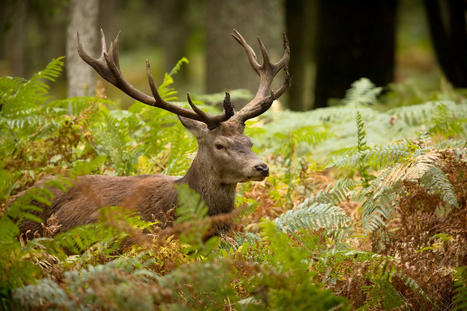
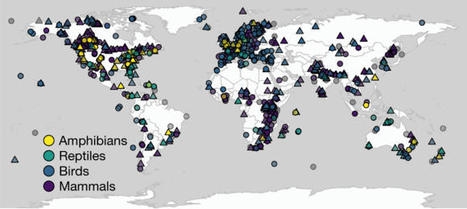
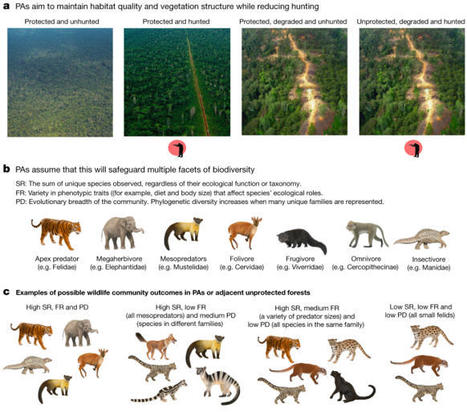


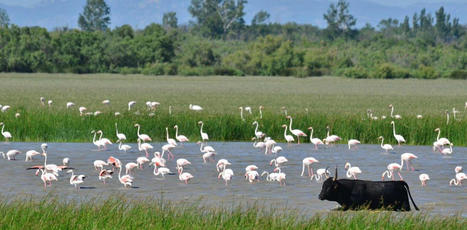
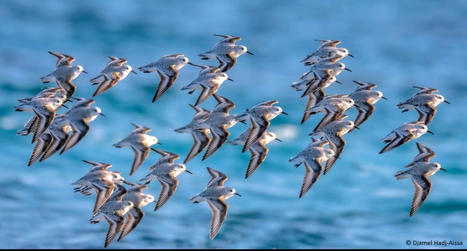
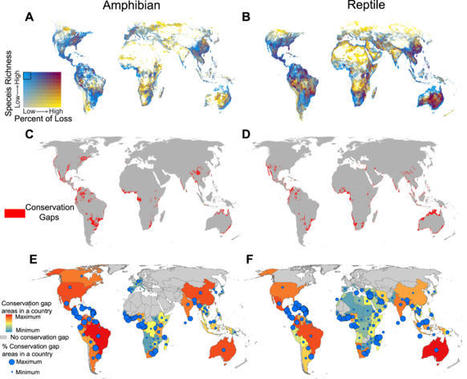

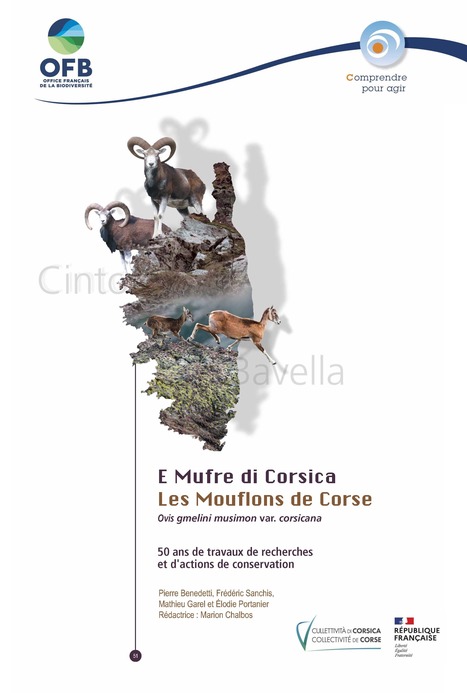

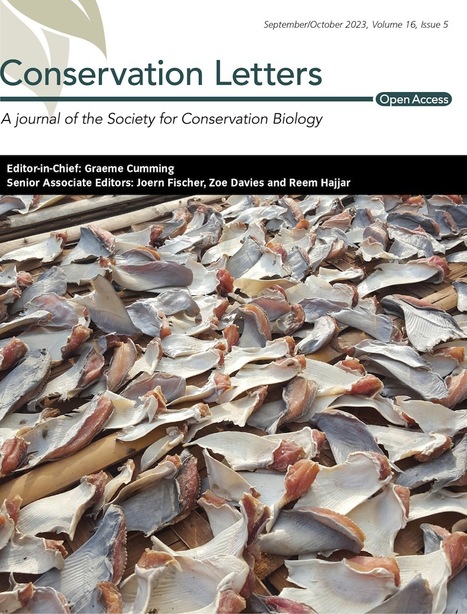
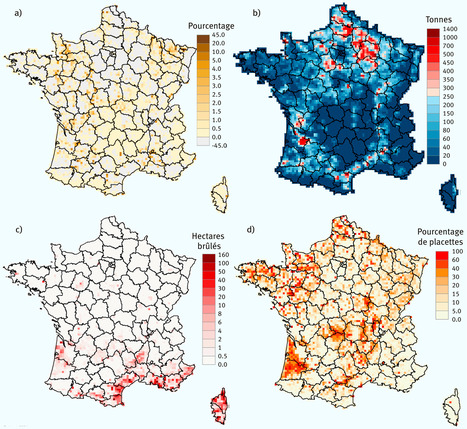
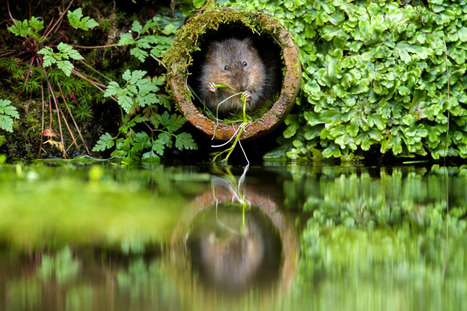
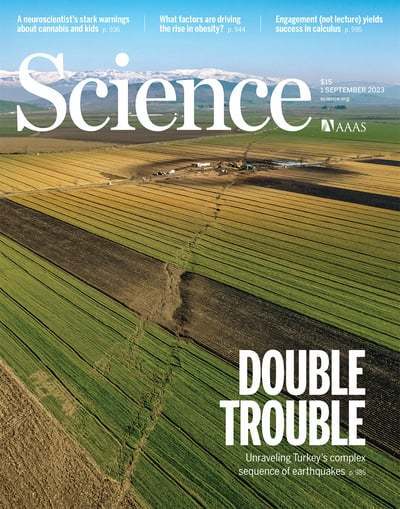
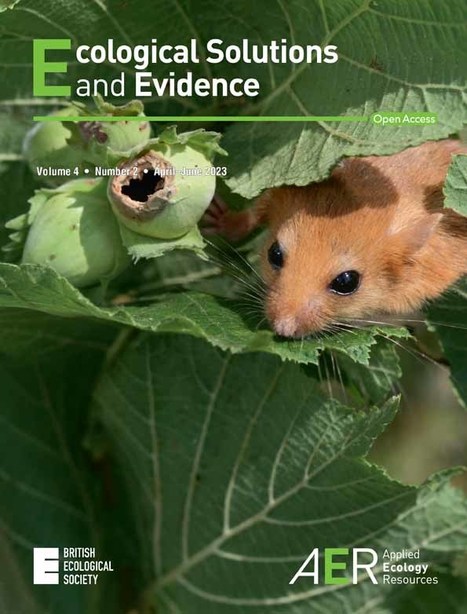

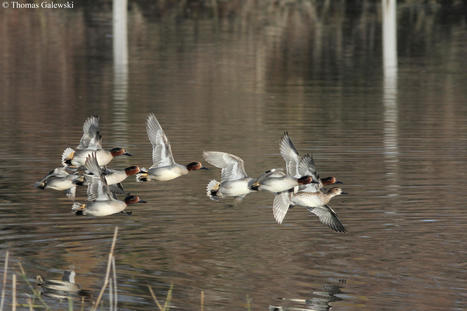
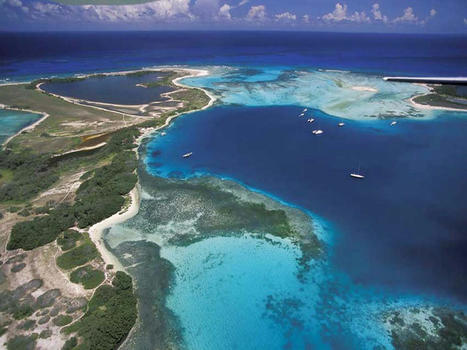






Exemple de projet dont vous trouverez les détails en ligne : Projet ManagForRes - Effet de la gestion forestière sur la réponse des écosystèmes forestiers guyanais aux changements climatiques. Contact Adrien JAILLOUX